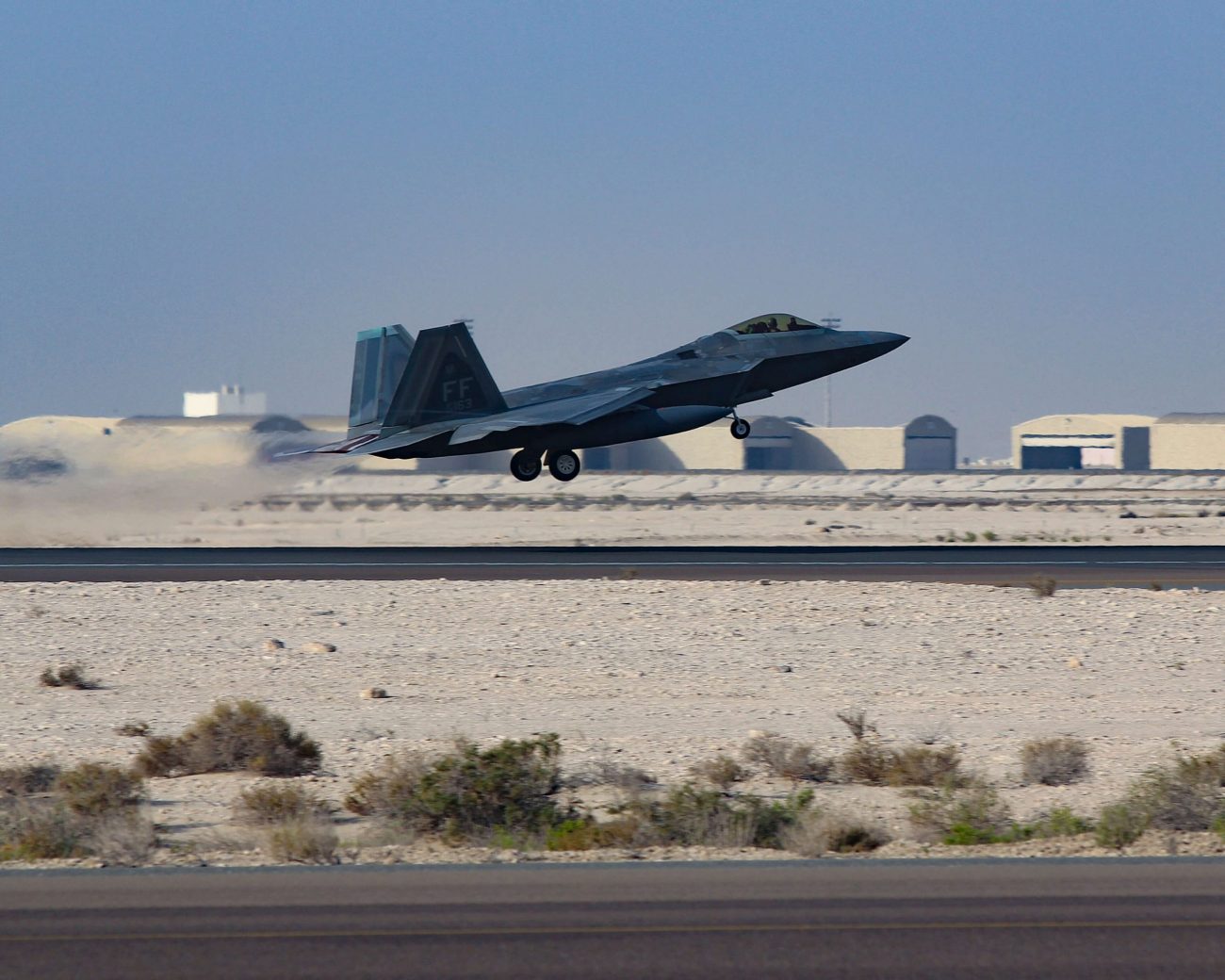On August 24, a US Air Force team successfully tested a third-party software with the F-22’s existing hardware, heralding “a new era in Department of Defense software capability development.”
It was the first time a fifth-generation fighter had incorporated third-party software in flight. It also marked the first time an open-source container orchestration software had been used on a fighter, Air Combat Command stated in a press release.
A team of Air Combat Command Federal Laboratory members, software developers from the 309th Software Engineering Group, and test pilots from Edwards Air Force Base worked together to achieve these objectives.
Generally, third-party software integration has not been possible with fifth-generation fighter aircraft. However, the Air Force team created and flight-tested their novel Open Systems Enclave (OSE), which combines an existing on-board hardware architecture with government-owned software, to address this issue and lower entry barriers.
This new enclave demonstrated that it could rapidly integrate new technologies, from the first line of code to flight, in less than 60 days.
This milestone lays the possibility for speedier software acquisition, with “apps rapidly developed, matured, and delivered to the warfighter at the push of a button.”

“This breakthrough fundamentally changes how we can deliver combat capability to the warfighter,” said Maj. Allen Black, F-22 test pilot and project co-lead.
“We’ve proven the ability to rapidly evaluate and integrate next-generation technologies developed by experts in government, industry, and academia at a lower cost with software portability across defense platforms,” Black said.
The statement added that the team is investigating and integrating numerous possible combat capabilities as cross-platform solutions, starting with the F-22 Program Office as an early user of OSE.
Project FoX
Black has long been interested in the concept of fifth-generation fighters being able to run portable third-party software. In the Air Force’s annual Spark Tank competition in October 2021, his “Project FoX (Fighter Optimization Experiment)” was chosen as a finalist.
Project FoX proposed a “Pentagon App Store,” in which developers could produce software operating on various platforms, and operators could download and run those programs on a commercial off-the-shelf tablet data-secured to the aircraft.
Separating fighter software and hardware development allows new programs to be developed and deployed swiftly, which has long been an objective of DoD commanders and software developers.
According to experts, the Pentagon’s lengthy purchase process means that software systems are typically obsolete by the time they are fully fielded. The process should be more efficient and progressive to allow for regular updates.
F-22 Raptor In Air Shows
On August 27, the USAF’s F-22 was seen at the Slovak International Air Festival (SIAF). The US Air Force (USAF) dispatched two F-22 Raptors from the 90th Fighter Squadron of the 3rd Wing for dynamic and static presentations.
The two jets arrived at noon, and after a few overflights over the airstrip, spectators at the airshow could witness the aircraft’s flying capabilities. Both aircraft then landed for the static exhibition.
The planes were stationed only 10 meters away from the audience.

The site of the SIAF airshows was Kuchya Air Force Base.
A relatively small airstrip, Kuchya, presently houses one of the primary air bases for the service because the main airbase, Slia, is undergoing renovations in preparation for the anticipated arrival of new F-16V aircraft.
The EurAsian Times had earlier reported that as part of a NATO Air Shielding mission, F-22s were forward deployed from Joint Base Elmendorf-Richardson, Alaska, to the 32nd Tactical Air Base in Ask, Poland.
In mid-August, the F-22 fighter jet also displayed impressive maneuvers at an airshow in Hawaii. The F-22 Raptor Demo Team, a display fighter whose pilot manages to get the most out of this remarkable plane, was the major highlight of that airshow.
It’s the last day of @kbayairshow and our demonstration is set for 1323 ? pic.twitter.com/ojNNczBs2J
— F-22 Demonstration Team (@F22DemoTeam) August 14, 2022
This aircraft is known for its ability to do the particularly stunning maneuver known as the Power Loop, which it can achieve because of its steerable thrust vectoring nozzles. The F-22 Raptor Demo Team also released the video of that event.
This maneuver involves turning towards the end of a climb where the F-22 decelerates as it climbs while almost “hanging” in the air.
With its steerable nozzles, the fighter can make a tight turn on itself once it is above the ground, something that no other aircraft can do to the same degree. In the Hawaii show, the move was coupled with a robust condensation trail that covered a large portion of the fighter.
- Contact the author at ashishmichel@gmail.com
- Follow EurAsian Times on Google News




